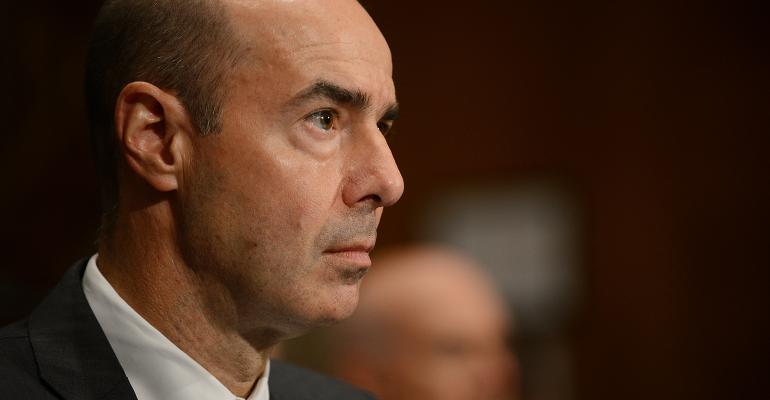With each passing day, “the clock is ticking” on whether a revised Department of Labor fiduciary rule can be passed and implemented before the November 2020 elections, according to an attorney on a Drinker Biddle audiocast on regulatory issues.
Ever since the SEC passed its Regulation Best Interest rule last year, many have wondered when the Department of Labor would revise its own fiduciary rule, which was originally passed by the Obama administration and struck down in the 5th U.S. Circuit Court of Appeals, in March 2018. The new rule is expected to align with the SEC regulation, and some were expecting it as early as the end of last year.
On Thursday's "Inside the Beltway" audiocast, Bradford Campbell, a partner in Drinker Biddle’s Employee Benefits and Executive Compensation Group, said the DOL had still not sent a revised proposal to the White House. Campbell said the initial delay was because DOL ethics officials were determining whether Eugene Scalia, Trump’s newly confirmed labor secretary, was too conflicted to participate in the creation of the new rule (Scalia served as counsel for plaintiffs who brought the successful class action suit against the Obama administration’s fiduciary rule). The department eventually decided Scalia could work on the revised rule.
But delays have persisted, and Campbell said the Trump administration needed to move quickly so the rule could be implemented before the November presidential election. Even if the rule was delivered to the White House tomorrow, Campbell said, it would face a multimonth process of public comment periods and revisions before implementation. And the longer the Trump administration waits for the rule, he said, the greater they risk a new Democratic administration undoing their efforts.
“The closer a regulation is implemented to the end of a term, the easier it is for that regulation to be changed by the incoming administration. It’s in their interest to move this expeditiously,” Campbell said. “It’s possible they could do all that in 2020 but it’d be an aggressive schedule for an agency to keep.”
While Campbell did not think the Trump administration would wait until after the election (and a presumed second term) to pursue the rule, starting the regulatory process earlier would make it more difficult for a potential Democratic administration to easily undo it, he said.
Fred Reish, a partner with Drinker Biddle’s Employee Benefits and Executive Compensation Group and chair of the Financial Services ERISA Team, said that from his anecdotal experience, some firms seemed “behind the curve” on preparing for Reg BI’s implementation on June 30. Sandra Dawn Grannum, a partner at the firm’s Litigation Group and co-chair of the Commercial Litigation Team, said firms should examine the guidance, FAQs and checklists released by the SEC and FINRA in order to help them prepare for implementation.
Grannum said FINRA has continually stressed they would be looking for “good faith efforts” to comply with the rule, and that they would be looking to see if firms are in compliance. The emphasis on good faith makes sufficient documentation efforts all the more necessary, particularly if firms are not able to be in 100% compliance by the implementation date.
“If the problem is not solvable in the next six months, I would say to make sure (firms) document that they’ve reviewed the problem and thought of solving it, and implemented what they can,” she said. “It’s difficult to prove good faith unless you have documentation about your efforts.”
Grannum also covered how cost should be considered when determining whether a recommendation is in the client’s best interest. While the lowest-cost option should be considered, Grannum said a lower cost should be considered “dispositive” as to whether a recommendation is appropriate.
“I don’t think a firm has to find the lowest costs for each client,” she said. “There has to be ways you can itemize what you looked at, and why it’s appropriate for this client, even if it’s not the lowest cost.”





